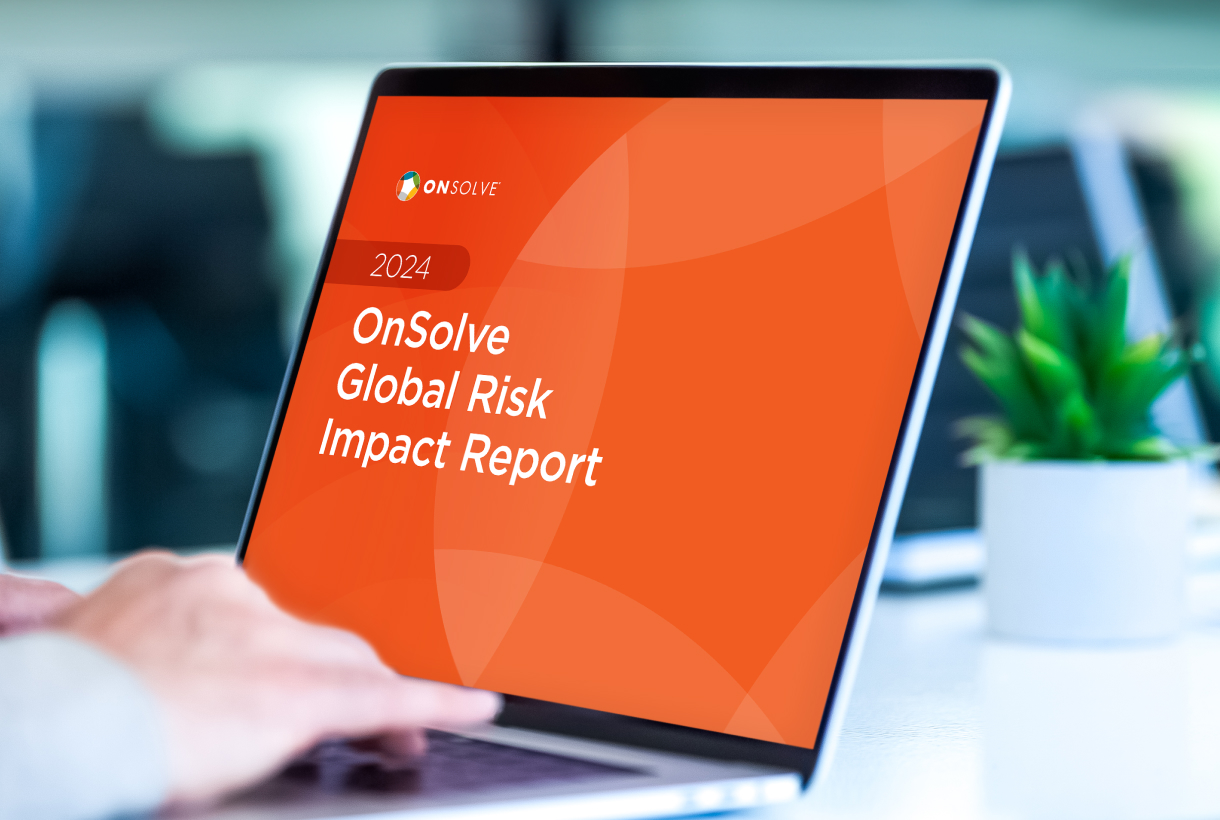In 2023, there were 1,395 reports of floods in New York, according to our risk intelligence data. The major locations impacted were the New York City area and locations along the Hudson River.
But our data also revealed a potential new trend: New York is experiencing continuous days of flooding. On one occasion in September 2023, New York City experienced three consecutive days of flooding due to heavy rain. That week included the wettest day on record at JFK International Airport. The lesson here is two-fold: Flooding is a pervasive threat, and consecutive days of flooding are becoming more common - which can make response and recovery more difficult.
In 2024, physical threats like this are now impossible to ignore. Ninety-nine percent of executives and 100 percent of government leaders surveyed said their organization or agency experienced a physical threat in the last 24 months, according to the 2024 OnSolve Global Risk Impact Report.*
It’s not just that physical threats occur more often and are more severe. They’re also more complex, creating numerous unanticipated impacts. For instance, the flooding in New York City led to power outages, road accidents, structure collapses and technical disasters. We call this dynamic risk.
To mitigate physical threats and the unanticipated impacts, a critical event management strategy built around risk prevention is no longer enough. Instead, organizations and government agencies should shift to resilience management: A proactive approach to threat mitigation built on rapid discovery and rapid recovery.
Warning: A Preparedness Gap Needs to be Closed
Despite the increasing frequency and complexity of physical threats, our new analysis indicates a preparedness gap. Consider these three key findings from the report.
1. Most leaders aren’t proactive.
Fifty-six percent of executives and 53 percent of federal leaders surveyed say their top priority is preparing for a physical threat crisis that puts employee safety or operations at risk. Yet only 23 percent of executives and six percent of federal leaders say they’re proactive about identifying risks.
2. Many organizations and agencies lack mitigation plans for the threats they’re experiencing.
Only 45 percent of executives have a mitigation plan in place for natural disasters, even though it’s the top physical threat on their radar for 2024. Likewise, 72 percent of state and local leaders say the biggest risk in 2024 is crime, yet only 63 percent have a mitigation plan in place for this threat.
3. Technology and training are needed to improve resilience.
Forty-five percent of executives identified inadequate threat monitoring and detection as the biggest challenge or barrier to improving the resilience program at their organization. Similarly, 25 percent of federal leaders say lack of technology is the biggest challenge or obstacle to improving resilience, while 37 percent of state and local leaders say limited upskilling or training creates the biggest gap and challenge in their agency’s planning, response and recovery program.
2024 Global Risk Impact Report
Every threat can become a cascading, dynamic risk. Learn how making the shift from risk prevention to resilience management can help organizations navigate the unexpected impacts of physical threats and strengthen preparedness.
Dynamic Risk: 4 Proof Positive Case Studies
Every threat has the potential to become a dynamic risk. In fact, 63 percent of executives and 51 percent of federal leaders say their organization or agency experienced unanticipated impacts “most of the time” or “always” as a result of the physical threats they experienced in the past 24 months.
To fully understand the impact of dynamic risk, we analyzed OnSolve Risk Intelligence data for four scenarios: Flooding, crime, geopolitical unrest and critical events surrounding elections. These case studies illustrate how a single physical threat creates numerous unanticipated impacts and how critical event management technology can help risk and resilience leaders proactively manage dynamic risk.
- Flooding: In both New York and Chennai, India, flooding has created numerous cascading effects, some of which – such as structure collapses and public health issues like waterborne diseases - can have lasting effects on communities. When cascading impacts on infrastructure, supply chains, business continuity, and public health and safety escalate, mass notifications can instantly alert residents and staff.
- Crime: Although reports of crime overall are falling, some types – like theft - are on the rise. There were more than one million reports of theft in the contiguous U.S. in 2023. Increases in specific types of crime necessitate corresponding training, upskilling and funding. Historical risk analysis can deliver highly location-specific data to identify the specific types of crime that pose the biggest risk, so leaders can make informed decisions.
- Geopolitical Unrest: Israel-Hamas Conflict. Following the Hamas terrorist attack on October 7, 2023, related crime and unrest rose significantly in North America, showing that organizations and agencies need to prepare for the dynamic impact of events that are happening on the other side of the world. AI-powered risk intelligence can provide trustworthy information in real time, so leaders can identify and respond to incidents like hate crimes and protests that may occur very rapidly.
- Lessons from the 2020 Presidential election. Election-related protests and riots spiked in November 2020 and again in January 2021. Reports of other physical threats like assaults and explosions also spiked during the same timeframe. As the 2024 presidential election approaches, historical threat data from the last election reveals a snapshot of potential threats that leaders should anticipate and prepare for, while real-time risk intelligence monitors events as they unfold, enabling a fast response.
Dynamic risk demands a proactive approach. To get a deeper look at the data, as well as five expert tips to shift to resilience management, download the full 2024 OnSolve Global Risk Impact Report.
*This research study explores risks that OnSolve detected across various timeframes and locations, that had the potential to impact its customers. The data in this report was gathered using OnSolve Risk Intelligence, an AI-powered technology that monitors more than 50 risk categories of physical threats across 159 countries in real time. OnSolve Risk Intelligence detected more than 50 million reports of global risk events from January 1, 2020, to December 31, 2023, using AI and analyst-vetted information pulled from data sources that include local fire, police and emergency medical services departments; weather reports and alerts from government and non-government verified sources; federal government agencies such as the Federal Bureau of Investigation, Department of Homeland Security and other crisis management entities; local, national and international news; and critical event reports from verified social media feeds.
OnSolve Risk Intelligence monitors global physical threats that have an impact on its base of 30,000 customers, which consists of half of the Fortune 100, nearly half of the Fortune 500 and 10,000 communities across the U.S., including state, regional, local and federal entities. OnSolve programmatically maps events to locations worldwide, determining which part of an organization might be at risk.


